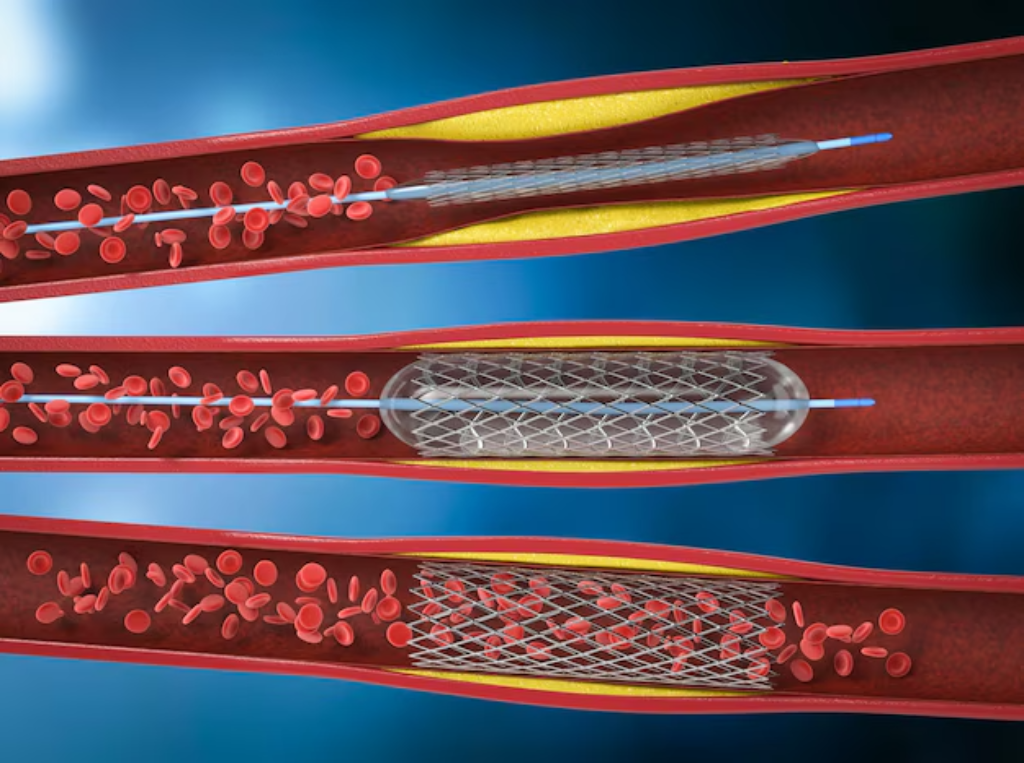Angioplasty (PTCA)
- Home \ Angioplasty (PTCA)

What is Angioplasty and Why It’s Done
Angioplasty, also called Percutaneous Transluminal Coronary Angioplasty (PTCA), is a minimally invasive procedure used to open blocked or narrowed arteries in the heart. A small balloon is inflated inside the artery to restore blood flow, often followed by placing a stent to keep it open. Doctors recommend angioplasty when patients have chest pain (angina), shortness of breath, or a heart attack caused by blocked coronary arteries. The procedure not only relieves symptoms but also reduces the risk of future heart damage.
What Patients Gain from Angioplasty
Angioplasty is more than a procedure it’s a lifesaving intervention that restores blood flow and helps protect the heart from long-term damage.

Restoring Blood Flow When It Matters Most
Angioplasty is often performed after an angiogram detects a significant blockage, or as an emergency treatment during a heart attack. By reopening narrowed arteries, it restores blood supply to the heart, easing symptoms and preventing further damage

Reduced Risk of Heart Attack
Angioplasty lowers the chance of future heart attacks by treating blockages before they cause permanent damage. When performed during an active heart attack, it can save heart muscle and significantly improve survival rates.

Faster Recovery Compared to Surgery
Unlike open-heart surgery, angioplasty is minimally invasive and usually requires only a short hospital stay. Recovery is faster, and patients can return to their routine in just a few days with the right care and follow-up.
Key Highlights of Angiogram
- Minimally invasive procedure with small catheter insertion
- Usually completed within 1–2 hours
- Quick relief from chest pain and other symptoms
- Quick relief from chest pain and other symptoms
- Shorter hospital stay and faster recovery than bypass surgery
Frequently Asked Questions
Find clear answers to common questions about angiogram, preparation, safety, recovery, and more to help you feel confident and informed
Is angioplasty painful?
The procedure is done under local anesthesia. Patients may feel mild pressure when the balloon is inflated, but overall discomfort is minimal.
How long does recovery take?
Most patients can return to light activities within a few days and resume normal life in about a week.
Is a stent always used?
In many cases, a stent is placed to keep the artery open, but the decision depends on the type and severity of the blockage.
What are the risks?
Angioplasty is generally safe. Rare risks include bleeding at the catheter site, re-narrowing of the artery, or, very rarely, heart attack or stroke.
Will I need medication after angioplasty?
Yes. Medications such as blood thinners and lifestyle changes are usually advised to keep arteries clear and prevent future blockages.
Take charge of your heart health with expert care
Book your angiogram with Dr. G. Dimpu Edwin Jonathan and get the clarity you need for a healthier tomorrow.

